If the Covid pandemic and the consequent supply chain disruption has taught the North American finished vehicle sector anything, it is that better communication and stronger partnerships are essential to for a competitive and connected future. Dennis Manns, executive vice-president of North Motors Group talks to Automotive Logistics
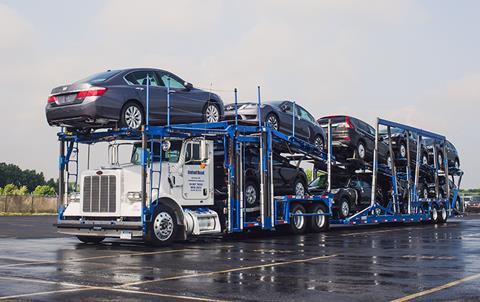
The impact of the Covid pandemic on the automotive supply chain has been extensive, affecting inbound supply, production and the final delivery of finished vehicles. One of the main, ongoing problems is the shortage of semiconductor chips, which has led to production shortages and a reduction in dealer inventory.
However, it is not just the shortage in microchips that has shaken automotive supply chains from one end to the other. There have been labour upheavals across the transport modes and at the ports. Ongoing zero-Covid measures in China debilitated the movement of parts and a lack of investment in transport assets, both on land and ocean, has now resulted in a capacity crunch for global finished vehicle movements. Taken together with western nations’ failure to keep up with the advances made in Asia on lithium battery production, there is now an appetite for greater localisation in manufacturing and supply.
However, these supply chain upheavals have highlighted weaknesses in working practice from which carmakers and their supplier and logistics partners are learning. According to Dennis Manns, an automotive industry veteran and currently executive vice-president of advisory group North Motors, the automotive industry has learned to communicate better, to value a shared strategy and tactical flexibility, as well as recognising the role that digital technology can play in dealing with disruption and strengthening the multimodal finished vehicle supply chain. Here he talks to Automotive Logistics about forging stronger partnerships and more robust processes for a connected and more sustainable future.
Automotive Logistics: What impact has the disruption caused by Covid, including the consequent microchip shortage, had on the distribution of vehicles in North America?
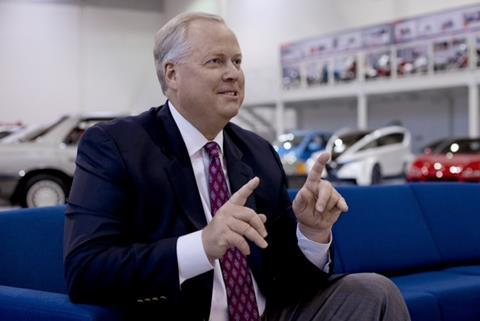
Dennis Manns: The shortage of semiconductor chips has had a dramatic impact on every industry and commodity around the world. An automobile is one of the most complex things manufactured. The lack of supply had a dramatic impact across the board. In years to come we will look back and reflect on the challenges we did not anticipate but had to face.
There are lessons for all of us. As an industry the crisis raised our level of awareness and I think it’s going to make us better strategically and tactically. We need better processes and we have to have better systems. We need better leadership in place to help us with these type of challenges.
One of the best things that’s going to come out of this is that we become better communicators. Better communication leads to being more effective and efficient within our own organisations. It is a basic skill that some of us forget about. But when you get in a corner, it’s one of those things that helps, if you’re good at it.
Inventory is building again now but can you provide any insight into progress and whether North America will return to the levels of inventory seen pre-Covid?
It depends on where your supplies are. Say you have a ten-day supply out. Out from where? Across the ocean? Across the nation? Across the street? I think this is one of those teachable moment events that we’ve all learned. If you have the capability of making that supply chain tighter at a minimal cost or at no cost, it’s best to tighten that circle
I was fortunate when I worked at Honda. The president of Honda would come down to my desk and ask how our product launch was going, because to him that was very important. I also ran the distribution group which sets the sales and purchase plan and the president would come down and dialogue with me. I don’t think that’s the norm in a lot of companies.
There are lessons for all of us. As an industry the crisis raised our level of awareness and I think it’s going to make us better strategically and tactically – Dennis Manns
With Covid and the supply chain, all of a sudden the people who are responsible for your supply chain and distribution roles, the executive leadership, are now sitting at the main table, and asking about the network and the railroads because they want some assurances.
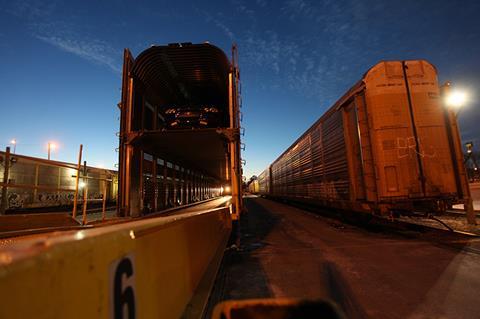
This is a very complex business and as an OEM you’re dependent upon many suppliers and logistics providers. If the railroads and the ports do a fantastic job, that’s excellent. But what if you don’t have trucking? What if that one piece of the supply chain is not in alignment?
In the US we were facing a prolonged rail strike last year. So, while stevedoring at the port is going great, and your back of plant processing labour are doing great, and the car haulaway people are doing great, there is suddenly the prospect of a rail strike.
That’s where people are looking to shorten the supply chain. If it doesn’t have to be across the ocean, can we pull it onshore? If it doesn’t have to be on the other side of the country, can we pull it midpoint?
What does it mean long term for vehicle distribution and the management of inventory?
It is better. The pendulum is swinging back. It still has a long way to go to get back from where we are now though. In the US vehicle sales were around 17m before Covid. Right now, we’re not even close to that, but I think this year you’re going to see the US market on 14.1m-14.2m.
The progression after that is going to depend upon a lot of other things. What’s your employment rate going forward? What’s your inflation rate going forward? What are your interest rates going forward? We need a higher level of comfort with some of this.
How has the volatility in the release of vehicles affected the provision of finished vehicle services?
What you’re seeing is OEMs trying to pull things closer together and I think there are a couple of different directions on this to be honest. In the North American US market there is an effort to secure production capacity within the footprint. OEMs are trying to remove the ocean leg.
The Asian brands, including Honda and Toyota, are bringing vehicles 30 days across the water. That’s big. If you have a base in the US or Canada you can use truck or rail, you have options. However, if it’s in Japan or China, for instance, you only have one option – ocean. I think this is one area where the OEMs are stepping back and looking at other strategic or tactical plans. That’s the dialogue I have with my customers – how we did it yesterday was great yesterday, but today is today and tomorrow is tomorrow.
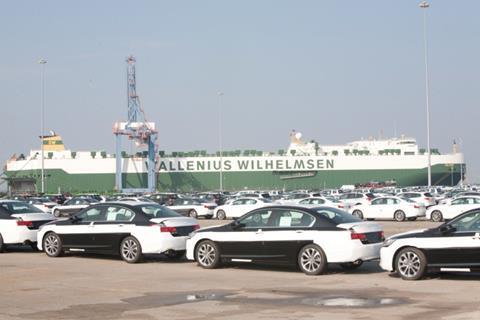
That’s big. If you have a base in the US or Canada you can use truck or rail, you have options. However, if it’s in Japan or China, for instance, you only have one option – ocean. I think this is one area where the OEMs are stepping back and looking at other strategic or tactical plans? That’s the dialogue I have with my customers – how we did it yesterday was great yesterday, but today is today and tomorrow is tomorrow.
A good example of this search for alternative solutions is in trucking. Typically, at the plants and the ports, an OEM will sign one or two carriers (or three if you’re very large) to your location. Then you have a choice of who gets the contract.
In what ways has the need to be more flexible in the provision of services improved them going forward? Where does the OEM stand to benefit?
In terms of the asset-based vs the asset-light parts of the business, the former has really grown in the US in the past several years. That provides another adjustment to the solution because you can increase your capacity very quickly and have that work in conjunction with rail.
Typically, OEMs turn to rail for everything moving beyond a 250-300-mile radius. However, railcar supply has become a challenge, in fact it has always been a challenge. One of the big changes in the US market is that trucking is reaching out to 350 or 450 miles. I hate to say it, but we have guys who are even trucking 700 miles in some cases.
Right or wrong, here’s the logic: I can put it on a truck today and it’ll be there tonight or tomorrow morning, and I’ve got the truck here today. Or, I can put it on a railcar tonight and it will be there in seven days, and I don’t have an empty railcar supply. These are the real-world issues. Then you have to look at your cost factors.
I’m a big supporter of the railroads. They’re a key part of everything that we do. If they’re one of your suppliers, they need to be one of your partners – Dennis Manns
At the same time, you have to look at the strategy for your network and the tactics you will use. Drivers in the US market can only drive 11 hours and then they have to rest for eight or ten hours. So that traffic is not coming back the same day. You might reason that you still have eight cars out that day, but your plan might be to get 1,000 out. And tomorrow you might not have railcar supply. Everything is about service and cost. These are the true issues.
I’m a big supporter of the railroads. They’re a key part of everything that we do. If they’re one of your suppliers, they need to be one of your partners. That answer goes with all of these issues: you don’t hire suppliers, you hire partners. I think this is so important because, whoever you select, their success or failure is your success or failure. So, I want to pick the best supplier, the best partner for my organisation, and I want to be attached at the hip.
I think we have some great leadership in place at all the Class 1 rail providers in the US, we really do. We have some really bright minds leading these organisations. When the supply chain world shifted, there was some downsizing that did take place and, unfortunately, recertification does take some time, rightfully so.
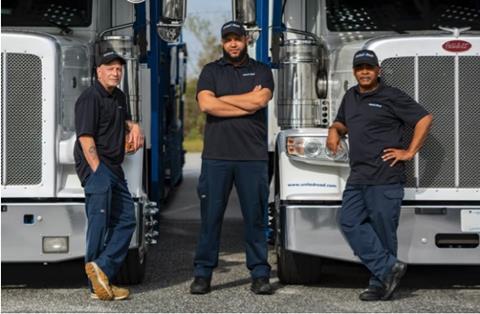
In the first quarter of this year I think you will see a dramatic improvement on the labour side with the railroads.
Railcar supply is probably a bigger challenge. It has been a challenge and will continue to be one. Added to which, there has been a shift in US manufacturing locations from the Midwest to other parts of the US, altering the shape of the network. That has an impact on the railcars being full half the time and empty the rest.
That’s a part of the industry that we have to improve. A railcar should never sit empty or full. If it’s full, somebody needs the vehicles inside. Anything that’s sitting more than a couple of hours has a dramatic impact to our industry.
I do know that the Alec Group [American Legislative Exchange Council] have helped to facilitate car supply. OEMs are also putting together plans to have better visibility of the car supply. Enhanced communication is going to help that piece of business.
What needs to be done to improve the recruitment and retention of haulaway drivers?
The driver supply issue is a tough one. Part of it is tied to the rate and part of it is tied to the trucking strategy. That needs to be improved because not everything goes by rail, but everything goes by truck. Nobody in the US drives a car from a plant to a dealership, that’s not how it works. So we have to get better at our driver piece and part of that is tied to rates.
The driver supply issue is a tough one. Part of it is tied to the rate and part of it is tied to the trucking strategy. That needs to be improved because not everything goes by rail, but everything goes by truck – Dennis Manns
When you hire a supplier, you hire your partner. You want a strong partner at the start of the contract, the middle of the contract and at the end of the contract. I want you there tomorrow because I’m not hiring you for one term, it is almost lifetime employment. That is how we have to approach our partners. Maybe it is a three-year contract, but I need you as part of my organisation much longer than that.
How do you think the emphasis on localised EV production in the US, supported by recent legislation, is likely to affect the balance of vehicle imports and exports in the country?
Everybody wants to maximise manufacturing in their country of origin. There is nothing really new about that. In the US we have the USMCA trade agreement with Canada and Mexico. Honda used to have three circles: Canada, the US and Mexico. At the time, I said no, this needs to be one circle because there is so much stuff coming across these borders both ways. From a taxation standpoint, there’s a protectionist thing there but it is kind of a North American union.
You will continue to see more manufacturers of non-ICE products. Battery electric vehicles are not the only option. Hyundai has committed several billion dollars to develop hydrogen-driven vehicles. Toyota has also committed several billion dollars to develop hydrogen products. Frankly, we had a hydrogen product with the Clarity at Honda 20 years ago. So, hydrogen is nothing new.
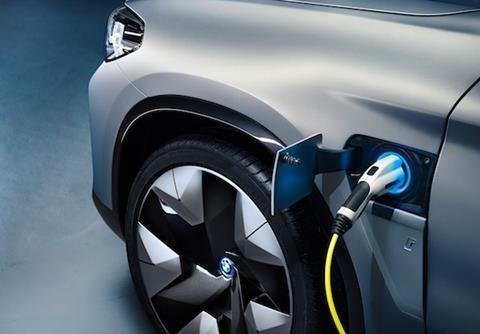
You will continue to see more manufacturers of non-ICE products. Battery electric vehicles are not the only option. Hyundai has committed several billion dollars to develop hydrogen-driven vehicles. Toyota has also committed several billion dollars to develop hydrogen products. Frankly, we had a hydrogen product with the Clarity at Honda 20 years ago. So, hydrogen is nothing new.
As mentioned, the OEMs themselves have realised they don’t have to bring vehicles on long journeys across the ocean. The closer the product is to the back door the more potential problems have been eliminated.
The push for electric vehicles is very strong but at this moment in time I’m not sure if I want all my eggs in one basket. The supply of precious metals is still a big question mark. The range anxiety of drivers is still a real issue.
If you have a cell phone you have charging anxiety. What about a car? And if you were the third owner of that phone, what kind of charging capacity would you have on it? It wouldn’t be very good. If you are the third owner of that electric vehicle, how much life do you have on that battery?
That is a part of our industry that needs attention because in the US the used car market is triple what the new car market is, that’s how important those cars are.
Ro-ro capacity for vehicle movements between China and North America has become tight in recent months. Is this a problem for trade and what can be done to provide more capacity in the short to medium term?
The movement to build locally has been in place for some time. That’s always the preference if an OEM is going to offer tax incentives. It is always about the money. If I’m giving you tax incentives, do I really want to give tax incentives for something that’s not built here? No. The answer is, build it close to help eliminate potential disruption and cost.
Can you point to some examples of where digital tools have helped deal with the delivery of vehicles in the last three years?
One area that is going to be improved is systems and capabilities. You need a higher level of visibility and transparency. Regardless of what brand you’re talking about you’re spending several hundred million dollars on a programme. If you have a brand that sells a million cars a year or more, you’re spending six, seven, $800m a year to deliver these vehicles and everyone involved wants to know where those vehicles are. I want to know how the hand-offs are going and that is all system driven.
In the past, a lot of the OEMs would cobble a system together to do something internal or they would have a reliance on a system that was 25 years old. Now we’re all so computer savvy and need the latest generation of technology. That helps us see how the network is doing. There is product throughout the delivery pipeline. We want to make sure there is a green light on all of that. We want to see that the railroads are doing great, the short-sea people are doing great, out labour pieces are doing great. But I also need to know when they are not doing great and focus my energy to help solve those issues. The systems piece is very important.
The capabilities available in the marketplace have changed dramatically over the past five years. I think the other thing that is important for the upcoming calendar year is staying connected and staying communicative.
You have to look upstream as well as downstream and not just at what is in front of you. If we’ve learned anything from Covid, it’s that tighter connections across the supply chain help with the flow of product. Your smallest supplier or your smallest location are now significant. Your organisation has to know everything you know. That includes what is happening in the network, what is the current strategy and what tactics are being used. Everyone has to know in which direction the organisation is going. That will make you better as the customer and as a supplier.

























![Global[1]](https://d3n5uof8vony13.cloudfront.net/Pictures/web/a/d/s/global1_726550.svgz)













No comments yet